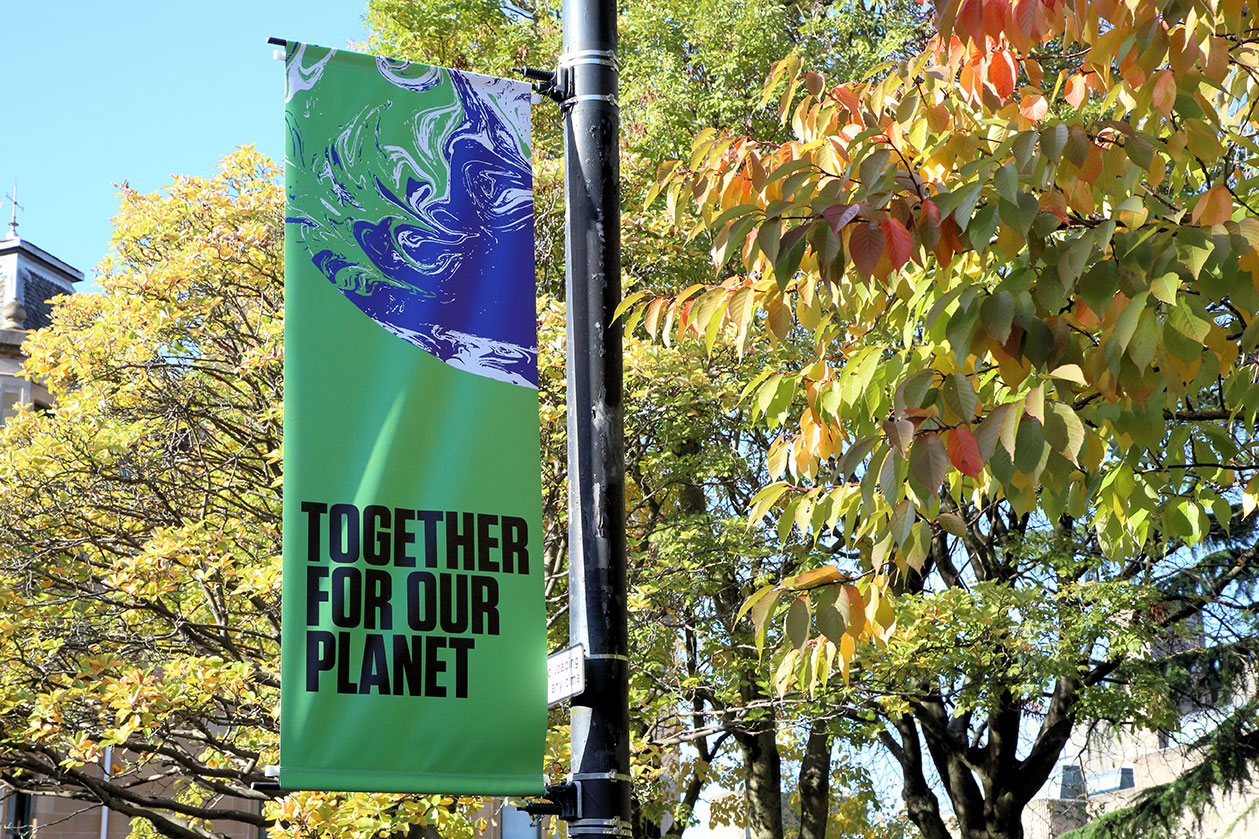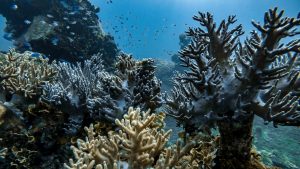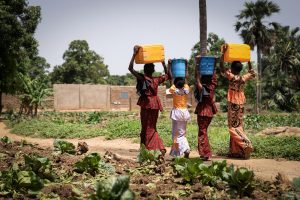- SIWI – Leading expert in water governance
- /
- Latest
- /
- Countries show growing interest in water solutions ahead of COP26
Countries show growing interest in water solutions ahead of COP26
 UN Climate Change Conference COP26 Banner in a Glasgow street. (Photo: Philip King / shutterstock)
UN Climate Change Conference COP26 Banner in a Glasgow street. (Photo: Philip King / shutterstock) An analysis of countries’ Nationally Determined Contributions to the Paris Agreement show fast-growing interest in water and nature-based solutions. But countries have everything to gain from doing more.
The 2015 Paris Agreement on climate change is built on countries’ individual commitments to reach the stated goal of keeping the global temperature rise below 1.5 degrees Celsius. All 191 parties to the agreement are obliged to ratchet up their contributions so that the goal gets within reach.
SIWI’s David Hebart-Coleman has analyzed the enhanced Nationally Determined Contributions (NDCs) submitted so far, as they have been summarized in the official NDC Synthesis Reports. “It is encouraging to see how more and more countries are focusing on water-related climate solutions, which is crucial if we are to achieve the goals of the Paris Agreement,” he says.
David Hebart-Coleman’s analysis shows several trends that he considers promising, though water-based climate solutions are still not used to their full potential. On Monday 1 November, David Hebart-Coleman will discuss this in the session Water and Mitigation: From Science to Climate Action held in the Water Pavilion at the climate meeting COP26. It can be followed here online, starting at 2pm UK time.
Positive trends in water-related NDCs include:
- Increased awareness: Compared to the first round of NDCs, countries seem increasingly aware of the role that water and water-related activities play in national economies. Not only do more countries include water in their climate action strategies, but they are also including a wider range of sectors, more detailed activities, and clearer measures or targets relating to water.
- Growth in both mitigation and adaptation measures: Interest is growing in both measures to reduce greenhouse gas emissions and in climate adaptation. There is however a noticeable difference where low-income countries are much more likely than high-income countries to prioritize climate adaptation; they are also disproportionally affected by the increasingly extreme weather events that follow global warming.
- Focus on co-benefits: Another noticeable trend is the increased recognition of co-benefits where a measure adopted to reduce emissions can also strengthen climate resilience. Activities such as reforestation, protection of wetlands, and the use of nature-based solutions are seen as having benefits for both adaptation and mitigation.
- Nature-based solutions were not mentioned in the first round of NDCs but now close to half of developing countries make such references. Many mitigation measures include water-related activities and an increased role in emissions reduction for ecosystems such as wetlands, peatlands, and mangroves in tropical localities, with 60 per cent of recent NDCs including such measures.
- Wastewater treatment commitments were found in 60 per cent of enhanced NDCs and are considered important for both mitigation and adaptation targets and goals. Countries are starting to understand the potential from improved wastewater management f on climate.
- New interest in WASH: Mentions of water, sanitation, and hygiene (WASH) activities have more than tripled compared to the first round of NDCs. This reflects higher awareness of the connection between WASH and climate resilience as well as emerging concerns that WASH-related infrastructure is under threat from climate change. Approximately 45 per cent of NDCs included measures around sanitation, including the management of solid waste for health and mitigation purposes.
- Gender perspectives are becoming more common, compared to the first round of NDCs. Much more attention is now paid to the interactions between gender and climate change in the NDCs, with more detail about specific vulnerabilities and risks as well as different gender-based assessment and activities. The enhanced NDCs also included measures designed to reduce gender-connected water risks, more attention to gender-based concerns need to be addressed within decision-making and overall governance processes.
- Water security is an increasingly common concept. While some ten countries made a reference to water security in the first round of NDCs, that number has now more than tripled, most notably in Latin America and the Caribbean region. Many of the new water security concerns and measures were closely connected to an increased focus on watershed or catchment management activities, which was once again very prominent in the LAC region.
However, David Hebart-Coleman says that countries need to do more to strengthen water perspectives in the next round of NDCs: “We really see some promising trends where countries are starting to understand the significance of water for effective climate action. But there are still many powerful water-related solutions that are not used to their full potential.”
Learn more about how countries can work more effectively with water in climate action
Water and Mitigation at COP26
Listen to David Hebart Coleman in the Water and Mitigation: From Science to Climate Action session 1 November at 2pm UK time. The session is moderated by SIWI’s Executive Director Torgny Holmgren and also features SIWI’s Malin Lundberg Ingemarsson who will present initial results from a forthcoming report on climate and water mitigation.
Tune into the SIWI-led Water Pavilion







